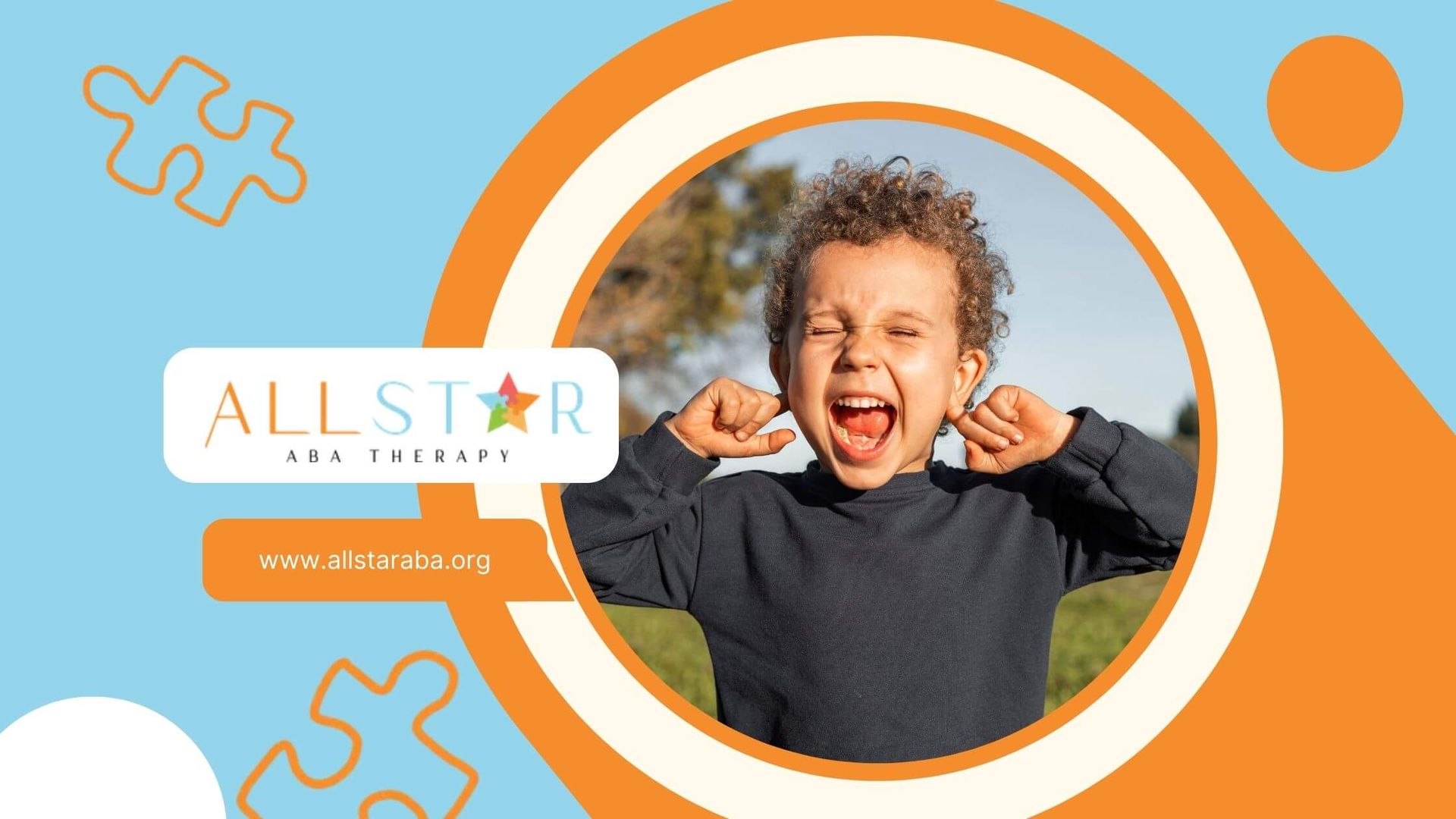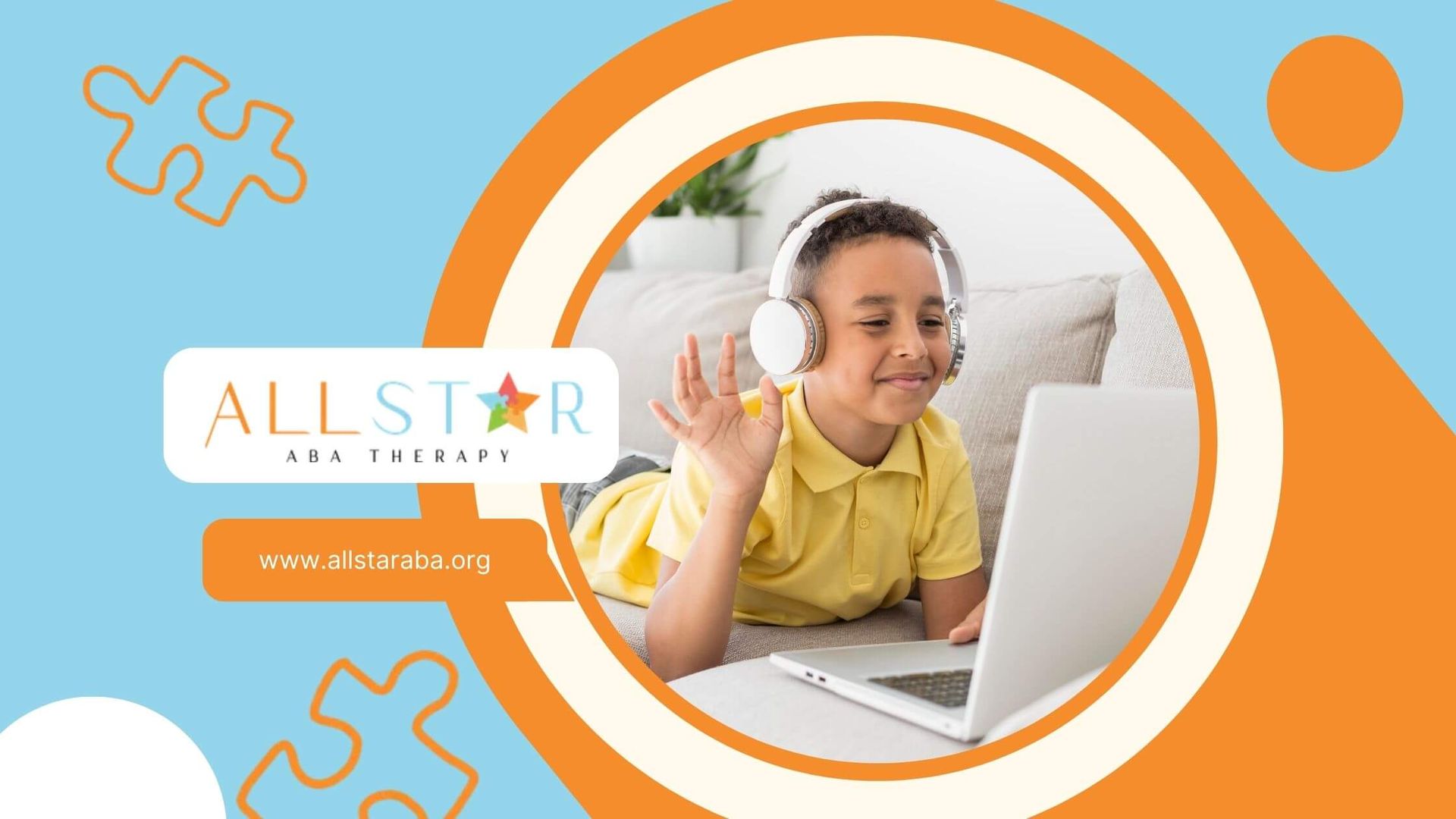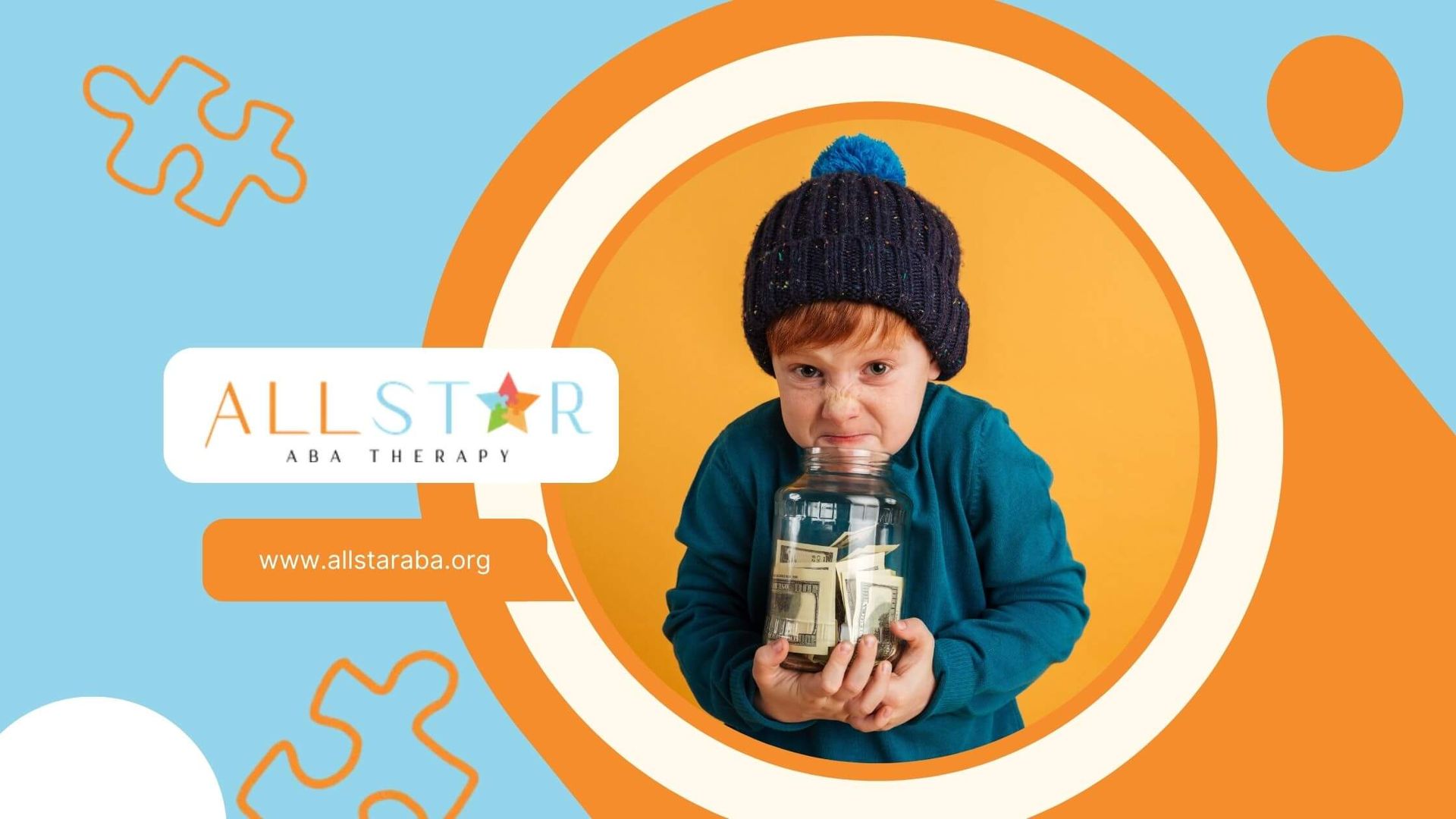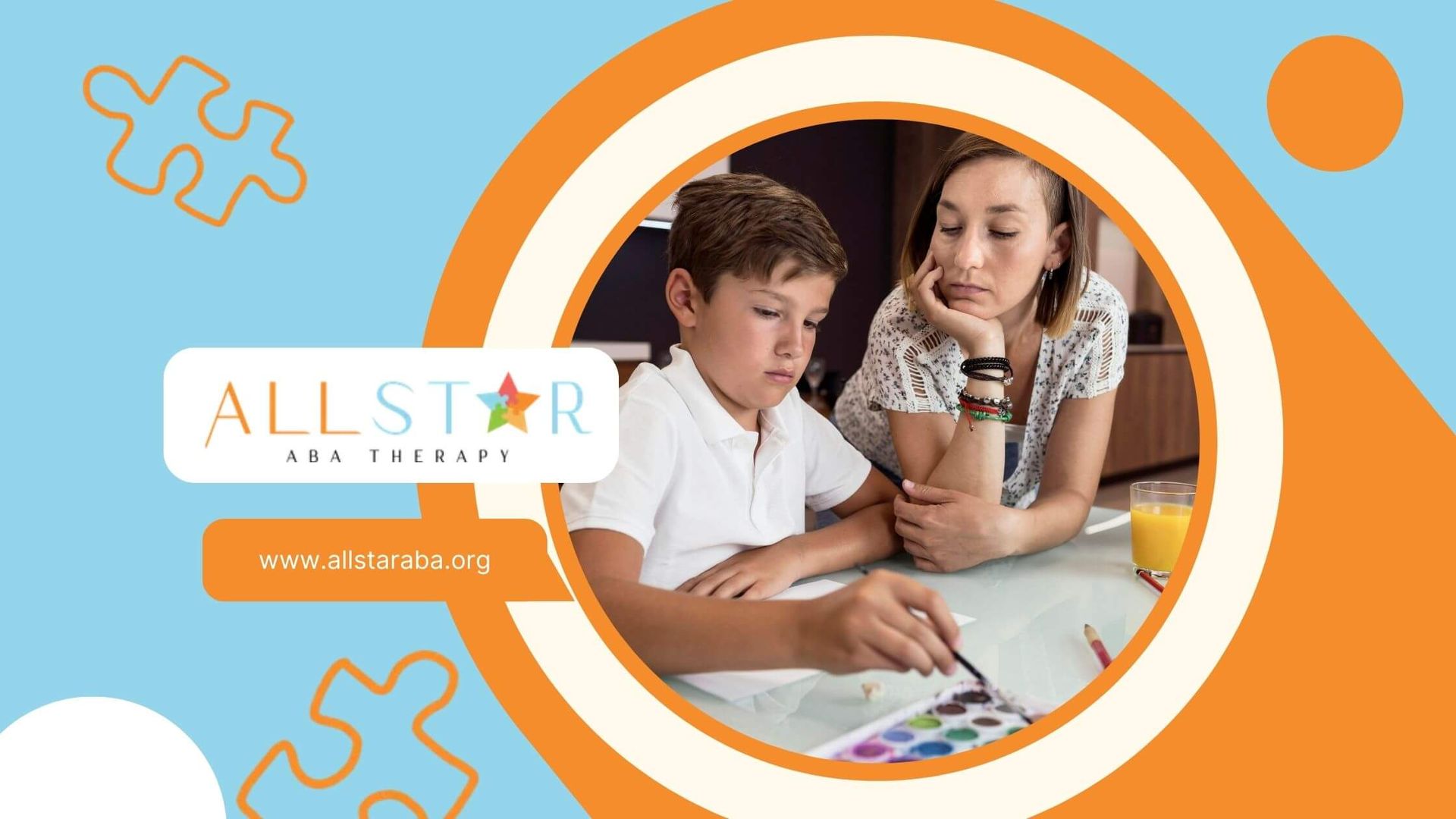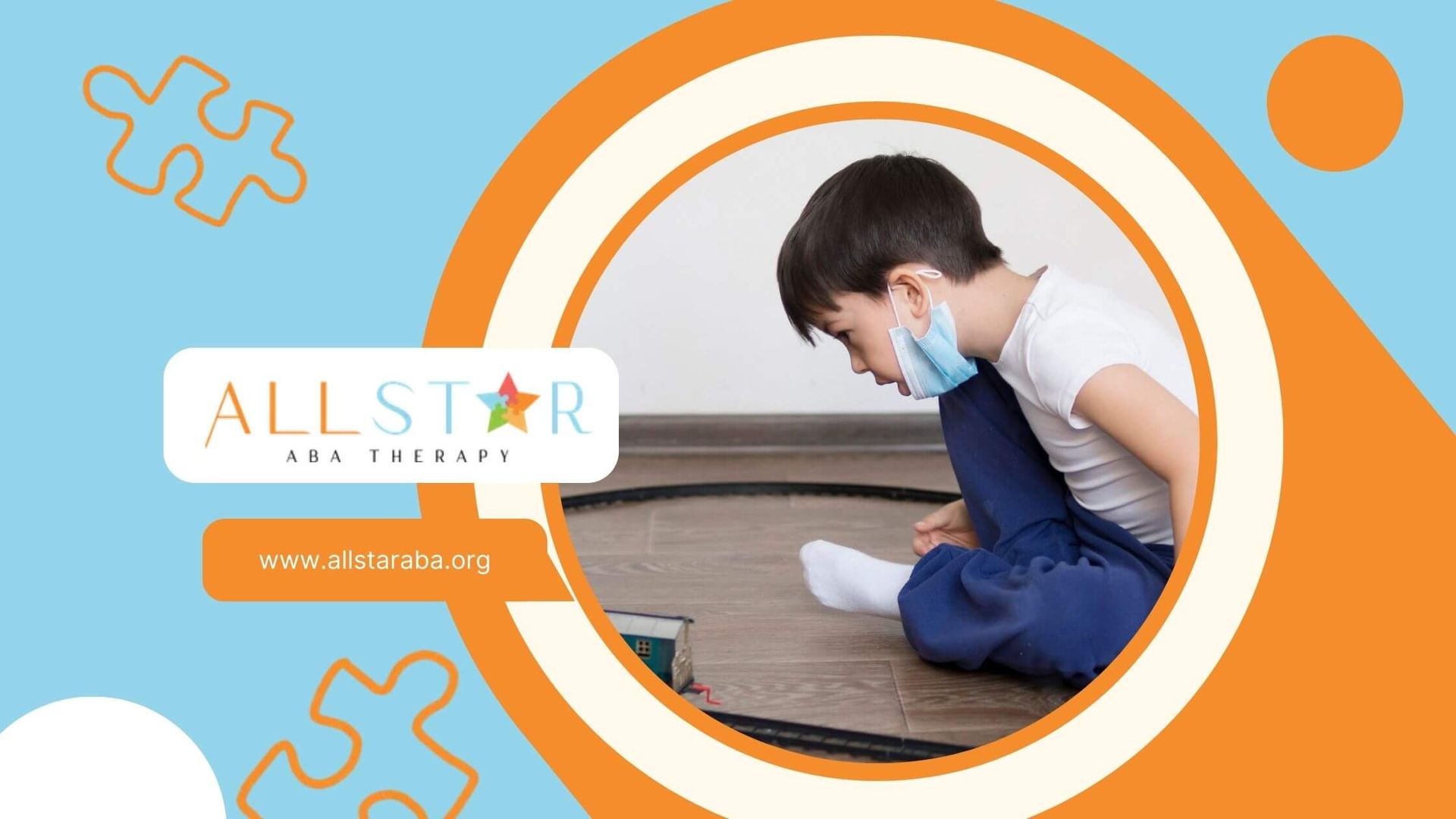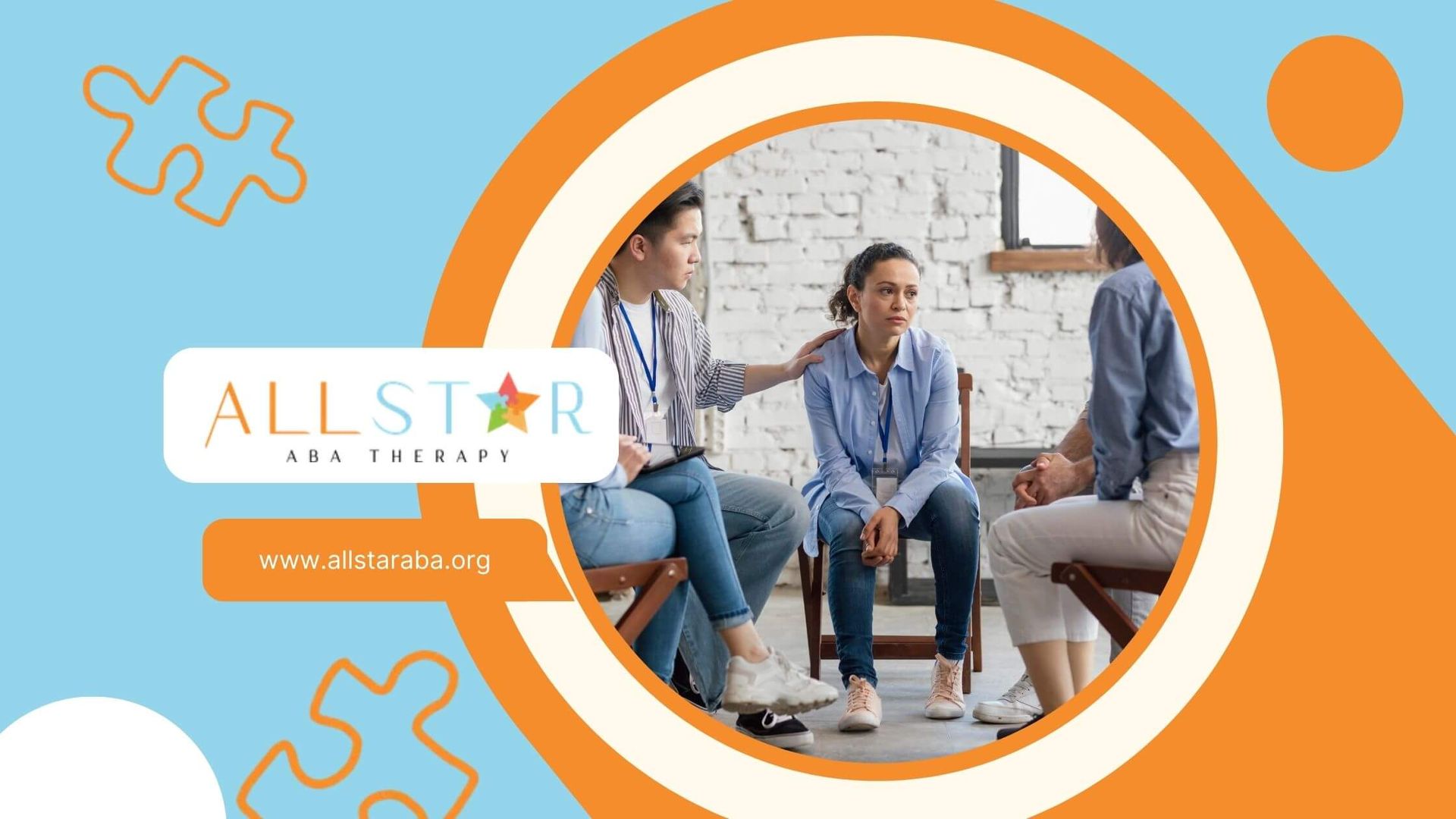New Paragraph
7 Essential ABA Strategies in Classroom for Every Teacher
Are you looking for proven ways to improve your classroom environment and manage student behavior more effectively? Applied Behavior Analysis (ABA) offers a toolbox of powerful strategies that can transform your teaching. By focusing on observation and data, ABA helps you understand and influence student actions in a positive way. This guide will walk you through seven essential ABA strategies designed to create a more structured, supportive, and successful classroom for you and your students.
Understanding ABA (Applied Behavior Analysis) in the Classroom
Applied Behavior Analysis (ABA) is a scientific approach focused on improving socially significant behaviors. At its core, it’s an evidence-based practice that uses observation and data-driven decisions to make meaningful changes. Think of it as a systematic way to understand why behaviors happen and how to encourage positive ones.
In a classroom setting, this isn't about rigid control but about creating a conducive learning environment. A behavior analyst might use ABA for behavior modification, but teachers can apply its principles to help students develop everything from communication skills to academic focus. We will explore the principles of ABA and how they can be practically applied in your classroom.
Definition and Core Principles of ABA for Teachers
The core principles of ABA are grounded in the science of learning and behavior. The main idea is that behaviors followed by a positive consequence are more likely to be repeated. Behavior analysis involves observing behaviors, collecting data on them, and then implementing strategies to increase helpful behaviors and decrease harmful or disruptive ones. It's a highly structured and data-driven method for behavior management.
In educational settings, these ABA principles provide a clear framework for teachers. Instead of reacting to misbehavior, you can proactively shape a positive classroom culture. The focus is always on creating meaningful, positive change that helps students succeed both socially and academically.
Unlike some other behavior management approaches that might be more subjective or less structured, ABA is distinguished by its reliance on data. Every intervention is measured for its effectiveness, allowing you to see what works and what doesn't. This empirical approach ensures that your strategies are tailored to student needs and are genuinely making a difference, rather than relying on guesswork.
Benefits of Using ABA Strategies in School Settings
Integrating Applied Behavior Analysis into school settings offers a wealth of benefits for both teachers and students. One of the most significant advantages is the improvement in positive behavior. By using techniques like positive reinforcement, you can create a classroom where students are motivated to participate, follow directions, and interact kindly with their peers. This leads to a more harmonious and productive learning environment for everyone.
Furthermore, ABA strategies are incredibly effective at teaching and strengthening crucial social skills and academic skills. For example, techniques like modeling and task analysis can break down complex social interactions or academic tasks into manageable steps. A successful example is using a token economy to reward students for completing their math problems, which directly boosts their academic skills and confidence.
Ultimately, the structure and consistency of ABA help reduce challenging behaviors and increase student engagement. When students understand expectations and receive regular, positive feedback, they are more likely to thrive. This systematic approach not only addresses immediate behavioral concerns but also equips students with the skills they need for long-term success.
How ABA Differs from Other Behavioral Approaches
While many behavior management theories exist, ABA methods stand out due to their scientific foundation and data-centric nature. Unlike approaches that may focus on a student's internal emotional state, ABA concentrates on observable behaviors and their environmental triggers. This makes it a practical tool for teachers who need clear, actionable steps for behavior modification in a busy classroom.
ABA uses direct instruction and systematic teaching to build skills, which may differ from more exploratory or child-led learning philosophies. The emphasis is on identifying a specific behavior, understanding its function, and then implementing and tracking an intervention. This precision is a key differentiator.
To put it simply, ABA is less about guessing why a student is acting out and more about figuring out what purpose the behavior serves and teaching a better way to achieve that goal.
| Feature | Applied Behavior Analysis (ABA) | Other General Approaches |
|---|---|---|
| Foundation | Based on the science of behavior and learning; data-driven and evidence-based. | Often based on developmental theories, humanistic psychology, or general discipline philosophies. |
| Focus | Targets specific, observable behaviors for increase or decrease. | May focus on internal feelings, relationships, or general classroom rules. |
| Intervention | Highly structured, systematic, and individualized plans with ongoing data tracking. | Can be less structured, with strategies applied more generally to the whole class. |
| Goal | To teach new skills and create measurable, lasting behavior modification. | To foster a positive environment, manage disruptions, or build character. |
Identifying Student Needs Before Implementing ABA
Before you can effectively use any ABA strategy, you must first understand the unique child’s needs in your classroom. Every student is different, and a one-size-fits-all approach to behavior simply won't work. Taking the time to observe and identify individual needs and behavior patterns is the critical first step toward successful implementation.
This initial assessment phase is where the real work begins. While a behavior analyst would conduct formal assessments, as a teacher, you can still gather valuable information by observing your students. The following sections will cover how to conduct informal assessments and set clear goals for behavior change.
Conducting Functional Behavior Assessments (FBA)
A Functional Behavior Assessment (FBA) is a process used to figure out the "why" behind a student's actions. Instead of just looking at the behavior itself, an FBA analyzes what happens right before (antecedent) and right after (consequence) to understand the function of the behavior. Is the student seeking attention, trying to escape a task, or getting something tangible? Answering this is key to effective behavior analysis.
The first step in an FBA is to clearly define the target behaviors you want to address. From there, you'll collect data through observation to identify patterns. For example, you might notice a student acts out every time they are asked to read aloud. This data helps you form a hypothesis about why the behavior is occurring—in this case, perhaps to escape the reading task.
Based on the FBA results, you can develop effective Behavior Intervention Plans (BIPs). If a student's behavior is meant to get attention, the BIP would focus on teaching them a more appropriate way to ask for it. This targeted approach is far more effective than simply punishing the misbehavior because it addresses the root cause.
Setting Clear, Measurable Objectives for Behavior Change
Once you understand the function of a behavior, the next step is to set clear and measurable objectives. Vague goals like "behave better" are impossible to track. Instead, you need specific targets. For example, an objective could be: "The student will raise their hand and wait to be called on before speaking, with no more than two reminders per class period." This gives you a clear benchmark for success.
These measurable objectives are the foundation of any behavior modification plan. They define the desired behavior in concrete terms, making it clear to both you and the student what the end goal is. When students know exactly what is expected of them, they are much more likely to succeed.
Setting clear goals is also how you measure the effectiveness of your ABA strategies. By tracking progress toward these specific objectives, you can see if your interventions are working. If a student is consistently meeting their goal, you know your strategy is effective. If not, the data tells you it's time to make an adjustment.
Essential ABA Strategy 1: Positive Reinforcement
Positive reinforcement is one of the most powerful and widely used ABA strategies. The principle is simple: when you follow a desired behavior with a reward, you increase the likelihood that the behavior will happen again. This approach shifts the focus from punishing bad behavior to celebrating and encouraging good behavior.
Using reinforcement strategies effectively is a cornerstone of behavior modification. It helps shape and maintain positive habits over time by tapping into a student's natural motivation for rewards and recognition. Next, we will explore the different types of reinforcers and how to apply them in your classroom.
Types of Reinforcers Used in Classroom Settings
When it comes to positive reinforcement, not all rewards are created equal. The most effective types of reinforcers are those that are meaningful to the student. In school settings, these can range from simple praise to more structured systems. The key is to provide immediate feedback to create a strong connection between the action and the reward.
One popular and effective system is the token economy. In this system, students earn "tokens" (like stickers, points, or chips) for specific behaviors. They can then exchange these tokens for larger rewards. This method provides consistent reinforcement and teaches valuable concepts like goal-setting and delayed gratification.
Common reinforcers you can use in your classroom include:
- Social Reinforcers: Verbal praise ("Great job!"), high-fives, or a smile.
- Tangible Reinforcers: Stickers, small toys, or other desirable items.
- Activity Reinforcers: Extra recess time, getting to be the teacher's helper, or choosing a fun classroom activity.
- Token Reinforcers: Points or tokens that can be saved up and traded for bigger prizes.
Practical Examples for Applying Positive Reinforcement
Applying positive reinforcement in your classroom can be simple and highly effective. For promoting positive behavior, you might praise a student who quietly waits their turn by saying, "I love how patiently you are waiting!" This specific praise not only rewards the student but also models the desired behavior for others. It's a fantastic tool for classroom management.
You can also use reinforcement to boost academic skills. For instance, you could create a "star chart" where a student earns a star for each completed assignment. After earning five stars, they might get 10 minutes of free reading time. This creates a direct link between effort and reward, motivating them to stay on task and build confidence.
For developing social skills, reinforcement is just as powerful. If you see two students working together cooperatively on a project, you could reward the group with a few extra minutes of free time. This encourages collaboration and positive peer interactions, showing students that good teamwork pays off in a tangible way.
Essential ABA Strategy 2: Prompting and Fading
Prompting is the practice of giving cues to help a student perform a desired behavior, while fading is the gradual removal of those cues as the student becomes more independent. This tandem approach is a key part of behavior management, as it provides support when needed and then encourages self-sufficiency.
The goal is to start with a prompt that ensures success and then slowly reduce the support until the student can perform the skill on their own. It's important to always start with the least intrusive prompt possible. This section will detail how to use prompting effectively and then fade that support away.
Step-by-Step Process for Effective Prompting
Effective prompting begins with choosing the right type of prompt for the situation. There are several types of prompts, ranging from very subtle to more direct. Verbal prompts are spoken cues, like reminding a student of the next step in a math problem. Visual prompts might be a picture card or a gesture, while physical prompts involve gently guiding a student’s hand to help them write a letter.
When teaching a new skill, you should start with the least intrusive prompt that still guides the student to the correct response. For instance, if a student is struggling to start an assignment, a simple verbal prompt like, "What's the first step?" is a good place to start. If that doesn't work, you might move to a gesture, pointing to the top of the page.
The step-by-step process is to 1) present the task, 2) wait for the student to respond, 3) provide the least intrusive prompt necessary for success, and 4) reinforce the correct response. This ensures the student is supported but not overly dependent on your help from the very beginning.
Fading Techniques to Encourage Independence
After a student begins to master a skill with prompts, the next crucial step is fading. Fading is the systematic and gradual removal of prompts to foster independence. The ultimate goal is for the student to perform the behavior on their own, without any cues from you. This process is essential for building true self-sufficiency and confidence.
There are different ways to fade prompts. You can reduce the intensity of a prompt, for example, by changing a full physical prompt to a light touch on the elbow. You can also increase the time delay before giving a prompt, giving the student more time to respond independently. The key is to reduce the ongoing support slowly, ensuring the student continues to succeed.
For instance, if you were using verbal prompts to help a student remember their morning routine, you might start by listing all the steps. As they get better, you might only say the first word of each step. Eventually, you may only need to give a single cue, like "routine," before they can complete it on their own. This gradual process makes learning feel manageable and promotes lasting independence.
Essential ABA Strategy 3: Task Analysis
Task analysis is a teaching strategy that involves breaking down a complex skill into smaller, more manageable steps. Many tasks that seem simple to us, like tying shoes or solving a multi-step math problem, are actually made up of many individual behavior skills. By teaching each of these small steps one at a time, you make learning less overwhelming.
This method is incredibly effective for teaching academic, social, and life skills. It allows you to provide systematic instruction and monitor progress at each stage of the learning process. The following sections will explain how to break down tasks and use this method to teach important skills.
Breaking Down Complex Tasks for Student Success
Using task analysis for student success starts with identifying the final goal and then deconstructing it into its individual components. Imagine you want to teach a student how to write a paragraph. This complex skill can be broken down into much smaller steps, making it easier for the student to learn and master.
The first step is simply listing every single action required to complete the task, from start to finish. You want to be as detailed as possible. Once you have your list, these smaller steps become your teaching targets. You can teach one step at a time, using prompts and reinforcement, before moving on to the next one.
For example, writing a paragraph could be broken down into:
- Brainstorming ideas for the topic.
- Writing a topic sentence.
- Writing three supporting detail sentences.
- Writing a concluding sentence. By focusing on one component at a time, you prevent students from feeling overwhelmed and set them up for success.
Teaching Life Skills Using Task Analysis
Task analysis is an exceptionally powerful tool for teaching essential life skills, especially for students who need extra support with daily routines. Simple activities like washing hands, getting dressed, or packing a backpack can be challenging. Breaking these routines down helps students learn the sequence and build independence.
For example, teaching a student to brush their teeth can be broken down into a sequence: pick up the toothbrush, put toothpaste on it, brush the top teeth, brush the bottom teeth, and rinse. By teaching and reinforcing each step, you can turn a complex task into a manageable and eventually automatic part of their daily routine. This is particularly helpful for students with autism, who often thrive on predictable sequences.
By observing a student's current behavior patterns, you can identify where they struggle in a routine and provide targeted support. Over time, as they master each small step, they will be able to complete the entire life skill independently. This not only improves their self-sufficiency but also boosts their confidence in their own abilities.
Essential ABA Strategy 4: Visual Supports and Schedules
Visual supports and schedules are fantastic tools for creating a predictable and easy-to-understand classroom environment. Many students, especially those who struggle with verbal instructions, benefit greatly from visual aids. These can include picture schedules, charts, and written instructions that clarify expectations and daily routines.
Using visuals is a proactive strategy that can reduce anxiety and prevent challenging behaviors before they even start. When students know what to expect and what is expected of them, they feel more secure and are better able to navigate their day. Let's look at how you can use visual aids to enhance your classroom structure.
Enhancing Classroom Structure with Visual Aids
Visual aids are a simple yet effective way to add structure and clarity to your classroom. They serve as constant reminders of rules, routines, and expectations, which can significantly reduce confusion and anxiety for students. A well-placed visual can improve communication skills by providing a non-verbal way to convey information.
For example, a chart with pictures showing the steps for morning arrival (hang up coat, put away backpack, start morning work) can guide students without you needing to give constant verbal reminders. This fosters independence and starts the day on a positive note. Visuals can also be used to facilitate positive interactions, such as a "feelings chart" that helps students identify and communicate their emotions.
Here are a few ways to use visual aids to improve classroom structure:
- First-Then Boards: A simple board showing what needs to be done now ("First work") and what comes next ("Then play").
- Classroom Rules Chart: A chart with pictures or simple text illustrating classroom rules.
- Voice Level Chart: A visual guide showing the appropriate noise level for different activities (e.g., silent, whisper, presentation voice).
Encouraging Routine and Predictability for Students
Routine and predictability are calming forces in a classroom, especially for students with unique needs like autism. When students know what is coming next in their day, they feel safer and more in control. This reduces anxiety, which is often a root cause of disruptive behaviors. A predictable schedule is one of the most effective proactive techniques to prevent classroom disruptions.
Creating a visual schedule of the daily routine is a great way to build predictability. This can be a chart on the wall with pictures or words representing each activity of the day (e.g., Reading, Math, Recess, Lunch). As you transition from one activity to the next, you can refer to the schedule, helping students see the flow of their day.
It's also important to provide warnings before transitions. A simple verbal cue like, "In five minutes, we will clean up and get ready for lunch," paired with a visual timer, gives students time to mentally prepare for the change. This small step can make a huge difference in creating smooth and calm transitions between daily routines.
Essential ABA Strategy 5: Modeling and Imitation
Modeling is the classic "lead by example" teaching strategy. It involves demonstrating a desired behavior or skill for students to imitate. This form of direct instruction is incredibly powerful because it provides a clear, concrete example of what you expect. It works for everything from academic tasks to complex social skills.
By observing you or a peer successfully perform a behavior, students gain a better understanding of what to do. Modeling helps them pick up on subtle social cues and learn appropriate responses in various situations. Let's examine how both teacher-led and peer modeling can be used in your classroom.
Teacher-Led Demonstration Techniques
As a teacher, you are in a prime position to use demonstration and modeling to teach new skills. When you introduce a new concept, don't just explain it—show it. For example, when teaching how to solve a math problem, work through it on the board step-by-step, thinking aloud as you go. This direct instruction gives students a clear roadmap to follow.
This technique is also excellent for improving communication abilities. If you want students to learn how to ask for help politely, you can model the exact words and tone of voice to use. You could role-play a scenario, saying, "Excuse me, I'm having trouble with this. Could you please help me?" This demonstration is far more effective than simply telling them to "be polite."
Modeling is a powerful tool for supporting students with autism, who may struggle to interpret verbal instructions alone. A clear, visual demonstration of a task or social interaction provides the concrete example they often need to understand and replicate the behavior. Consistent modeling helps build a library of appropriate responses they can use in the future.
Promoting Peer Modeling for Social Skills
While teacher modeling is effective, peer modeling can be even more powerful for teaching social skills. Students are often more receptive to learning from their classmates. You can leverage this by strategically pairing students and highlighting positive examples of peer interaction. This is one of the best teaching strategies for creating an inclusive and supportive classroom.
For instance, if you want to teach students how to join a game at recess, you can point out a student who does it well. You might say to the class, "I noticed how nicely Sarah asked to join the game. She waited for a pause and said, 'Can I play too?'" This praises the model student and provides a clear script for others.
You can also set up structured opportunities for peer modeling. During group activities, pair a student who has strong social skills with one who is still developing them. This creates a natural learning opportunity where the student can observe and imitate appropriate behavior in real social situations, helping them navigate friendships and group work more successfully.
Essential ABA Strategy 6: Data Collection and Progress Monitoring
How do you know if your behavior strategies are actually working? The answer lies in data collection and progress monitoring. This is the heart of behavior analysis, turning your observations into concrete information. By tracking a student’s progress, you can make informed, objective decisions about your intervention strategies.
Without data, you're just guessing. Consistently recording information allows you to see patterns, measure growth, and adjust your approach when needed. The next sections will cover simple ways to track behavior and how to use that data to refine your interventions.
Ways to Track Student Behavior and Outcomes
Data collection doesn't have to be complicated or time-consuming. Simple methods can provide a wealth of information about student behavior. One of the most common methods is frequency recording, which is simply tallying how many times a behavior occurs in a specific period. For example, you could track how many times a student calls out without raising their hand during a 30-minute lesson.
Another useful method is duration recording, where you measure how long a behavior lasts. This is great for tracking things like how long a student stays on task or the length of a tantrum. These data points help you understand behavior patterns and see if they are improving over time.
This information is vital for creating and adjusting Behavior Intervention Plans (BIPs). When you have clear data showing that an intervention is or isn't working, you can confidently make changes. This objective approach ensures that your efforts are truly effective and tailored to the student's needs, which is the best way to measure the effectiveness of your ABA strategies.
Using Data to Adjust ABA Interventions
The data you collect is only useful if you use it to guide your actions. Regularly reviewing a student's progress is essential for adjusting intervention strategies effectively. If your data shows that a challenging behavior is decreasing, you know your plan is working. If there's no change or the behavior is getting worse, it's a clear sign that you need to try a different approach.
For example, if you're using a token system to encourage a student to complete their work, and your data shows they are completing more assignments, you can continue with that strategy. However, if the data shows no improvement after a week, you might need to change the rewards or re-evaluate the function of the behavior. Perhaps the student needs more direct support or a different kind of motivation.
This process of analysis and adjustment is what makes ABA so dynamic and effective. It's a continuous cycle of implementing, monitoring, and refining your approach. While a behavior analyst can help with complex cases, teachers can use this same data-driven mindset to provide effective, ongoing support and ensure their strategies lead to real, measurable improvements for every student.
Essential ABA Strategy 7: Redirection and Precorrection
While reinforcement is great for building positive behaviors, you also need strategies for managing disruptive behaviors in the moment. Redirection and precorrection are two proactive techniques for behavior modification. Precorrection involves anticipating and preventing misbehavior, while redirection involves guiding a student from a challenging behavior to a more positive one.
These strategies help you address issues before they escalate, maintaining a calm classroom and fostering positive interactions. Instead of reacting to problems, you'll be preventing them. Let’s explore how to use these proactive techniques effectively.
Proactive Techniques for Preventing Misbehavior
Precorrection is one of the most effective proactive techniques because it stops problems before they even begin. It involves anticipating when a student is likely to misbehave and providing a prompt or reminder right before. This is a key component of many effective Behavior Intervention Plans in school settings.
For example, if you know a student often calls out during group reading, you can quietly remind them right before the activity starts, "Remember to raise your hand if you have something to share." This simple prompt can prevent the disruptive behavior from occurring in the first place. It sets the student up for success rather than waiting for them to fail.
Here are some examples of precorrection in action:
- Reminding students to use "walking feet" before they enter the hallway.
- Reviewing the rules for a group activity right before it begins.
- Giving a student a fidget tool before a long lesson to prevent restlessness.
- Praising the students who are already on task as a cue for others to get started.
Effective Strategies for Redirecting Challenging Behaviors
When challenging behaviors do occur, redirection is an effective in-the-moment strategy. Redirection involves gently guiding a student’s attention from an undesirable action to a more appropriate one. It's a subtle form of behavior modification that avoids a power struggle and keeps the classroom environment positive.
For example, if a student starts tapping their pencil loudly on the desk, you could walk over and quietly hand them a piece of modeling clay to squeeze instead. You're not scolding them for the tapping; you're simply offering a better alternative. This approach is one of the best teaching strategies for redirecting energy without causing a major disruption.
The key to effective redirection is to be quick, calm, and discreet. The goal is to interrupt the challenging behavior and immediately pivot to a positive or neutral activity. By doing so, you can de-escalate the situation and get the student back on track with minimal fuss, all while maintaining a supportive and respectful tone.
Creating an Inclusive Classroom with ABA
ABA techniques are not just for special education; they are powerful tools for creating a truly inclusive classroom where every student can succeed. By focusing on individual needs and positive behavior skills, ABA helps you create a structured and supportive environment that benefits all learners, regardless of their abilities.
The flexibility of ABA allows you to adapt your teaching to meet the unique needs of each child, ensuring everyone feels valued and capable. The following sections will discuss how to adapt ABA for diverse learners and the importance of collaboration with staff and families.
Adapting ABA for Diverse Learners, Including Those with Autism
ABA is not a one-size-fits-all program; its strength lies in its adaptability for diverse learners. For students with autism, ABA methods can be particularly transformative. Strategies like visual schedules, task analysis, and direct instruction provide the structure and clarity that these students often need to thrive in a classroom setting.
For example, a student with autism who struggles with language development may benefit from visual aids that connect pictures to words, or from script fading techniques to practice social conversations. The data-driven nature of ABA ensures that the support you provide is tailored to their specific individual needs and is actually working.
Beyond autism, these strategies can be adapted for any student who needs extra support. A student with ADHD might benefit from a token economy to help them stay on task, while a student struggling with reading could benefit from task analysis to break down decoding skills. The core principle is always to assess individual needs and apply the right strategy to help that student succeed.
Building Collaboration Among Teachers, Support Staff, and Families
Creating an inclusive classroom is a team effort. Strong collaboration between teachers, support staff like aides and ABA therapists, and families is essential for providing consistent, ongoing support for students. When everyone is on the same page and using similar strategies, students receive clear and consistent messages about expectations and behavior.
Regular communication is key. Sharing data and progress with family members and support staff ensures that everyone is aware of what's working and what challenges remain. Family involvement is particularly crucial, as parents can reinforce skills and strategies at home, which helps generalize behaviors from the classroom to other environments.
When a student has a dedicated team working together, the impact is profound. This collaborative approach ensures that the student's needs are met from all angles, creating a comprehensive support system. This teamwork is one of the most vital ABA strategies that promote a truly inclusive and supportive environment for all students, especially those with unique learning profiles.
Common Mistakes to Avoid with ABA Strategies
While ABA strategies are powerful, they need to be implemented correctly to be effective. Some common mistakes can undermine your efforts at behavior modification and classroom management. Forgetting to collect data, being inconsistent with reinforcement, or focusing only on punishment are frequent pitfalls.
Knowing these common mistakes can help you avoid them. The goal is to use ABA in a way that is both effective and ethical, always putting the student's needs first. Let’s look at how to overcome implementation challenges and ensure your approach is student-centered.
Overcoming Implementation Challenges
One of the biggest implementation challenges is inconsistency. If you only reward a positive behavior sometimes, or only redirect a negative behavior occasionally, students will get mixed messages. Consistency is crucial for helping students understand expectations. Sticking to your plan, even when it’s difficult, is key to long-term success.
Another common issue is the "extinction burst." When you start ignoring a behavior that used to get attention (extinction), the behavior will often get worse before it gets better. This is normal, but it can be tempting to give in. Understanding that this is part of the process can help you stay the course.
If you're facing persistent challenges, don't hesitate to seek support.
Collaborating with a school psychologist or a behavior analyst can provide new insights and strategies. They can help you refine your approach to better suit your classroom environment and ensure you are effectively promoting positive behavior.
Ensuring Ethical and Student-Centered ABA Applications
One of the most critical aspects of using ABA is ensuring that all applications are ethical and student-centered. Behavior modification should never be about forcing compliance or making students conform. Instead, the goal should be to teach skills that improve a student's quality of life and help them achieve their own goals.
Ethical practices mean always prioritizing the student's dignity and well-being. This includes using reinforcement more than punishment, focusing on building skills rather than just eliminating behaviors, and ensuring the goals you set are meaningful for the student. Forcing a student to suppress a harmless self-soothing behavior, for example, would not be a student-centered goal.
In all educational settings, from ABA therapy clinics to general classrooms, the focus must be on empowerment. Are you teaching a student a better way to communicate their needs? Are you helping them build the skills to make friends? By keeping the student at the center of every decision, you ensure that your use of ABA is both ethical and truly beneficial.
Conclusion
In conclusion, implementing ABA strategies in the classroom can significantly enhance the learning experience for both students and teachers. By focusing on methods such as positive reinforcement, visual supports, and effective data collection, educators can create an inclusive environment that accommodates diverse learners’ needs. Understanding the principles of Applied Behavior Analysis empowers teachers to motivate students, manage behaviors proactively, and foster independence. Remember, collaboration with support staff and families is essential for success. If you want to further explore these strategies and how they can be tailored to your classroom, feel free to reach out for a free consultation!
Frequently Asked Questions
What are some real-world examples of ABA success in schools?
In school settings, ABA strategies lead to real success stories. A teacher using a token economy can see a student’s homework completion rate double, boosting their academic skills. Another example is a non-verbal student learning to use picture cards to communicate their needs, significantly improving their social skills and reducing frustration.
How can teachers measure the effectiveness of ABA strategies?
Teachers can measure effectiveness through consistent data collection. By tracking metrics like the frequency or duration of a behavior, you can see if your intervention strategies are working. This behavior analysis allows you to graph a student's progress and make data-driven decisions to adjust your teaching strategies as needed.
What proactive ABA techniques prevent classroom disruptions?
Proactive techniques like precorrection and visual schedules are excellent for preventing disruptions. By reminding a student of expectations before an activity (precorrection) or providing a clear visual routine, you reduce uncertainty and anxiety. These strategies are cornerstones of effective behavior intervention plans and promote positive behavior from the start.
Need Support?
We're Here to Help!
Our experienced team is ready to assist you. Reach out today to discuss how we can support your child's development and well-being.
Get started with expert ABA therapy today.



